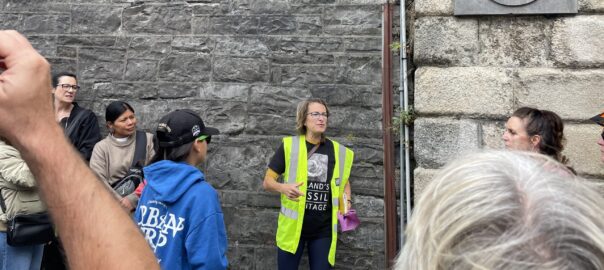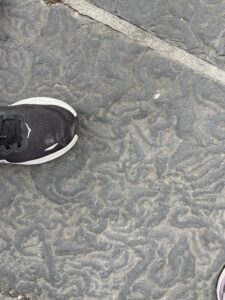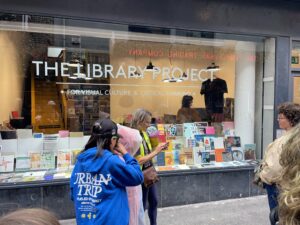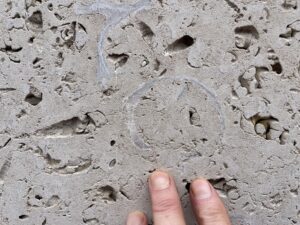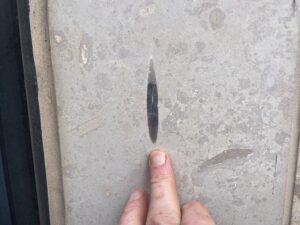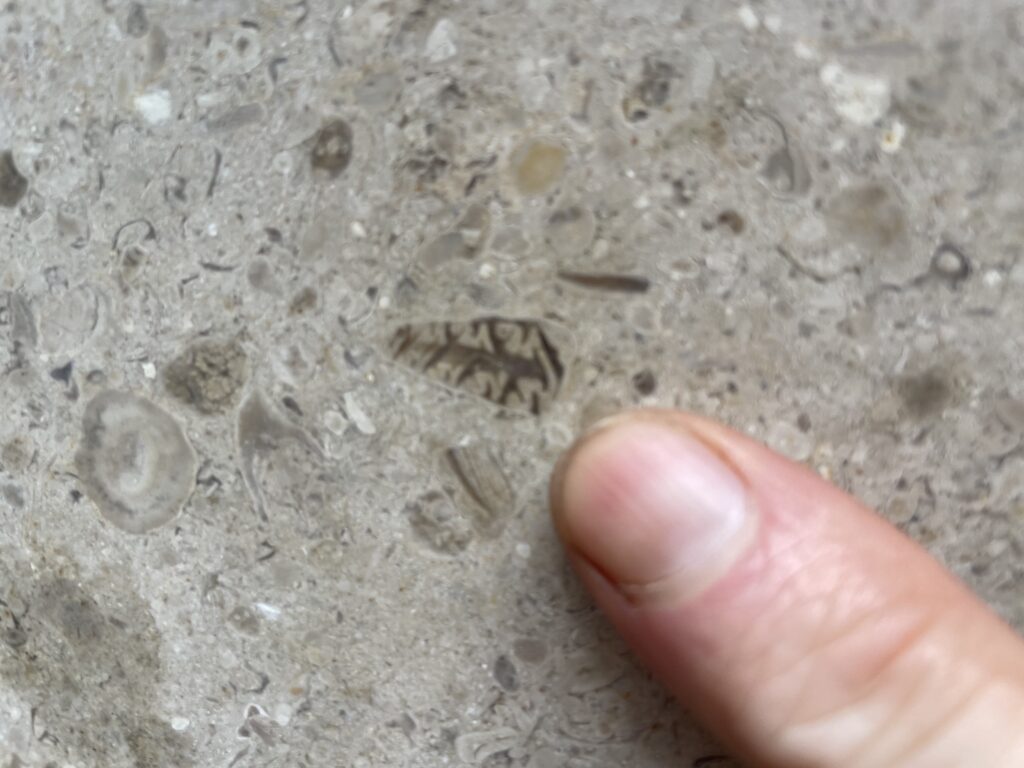Ireland day 1422. Wednesday 20 August 2025- Fossils
| Today’s summary | Val still away but I had an early start to get into Dublin to join a guided fossil walk round Dublin. Started at 10 am at Christchurch Cathedral and was led by Prof Marie McNamara, head of Palaeontology at University College Cork. Very interesting looking at fossils in the walls of buildings around the town. Lasted about 2 hours. Had coffee at MoLi when it finished, with a friend who was also on the walk. An afternoon at the National Gallery afterwards, and finally Spanish at Cervantes from 6-9pm. | ||||
| Today’s weather | Cool windy and grey, with light rain mid morning. Appx 16c | ||||
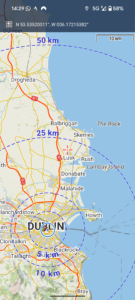 |
 |
||||
| Today’s overview location (The blue mark shows the location of our route) |
Close-up location (The blue line shows where we walked) (Click button below to download GPX of today’s walk as recorded, or see interactive map at bottom with elevations corrected): Dublin fossil walk |
||||
Commentary
A few days ago, a friend from the Walking Club contacted me to let me know about an upcoming “Dublin Fossil Walk” – and wondered if I’d be interested. Of course, I was – I have an amateur interest in palaeontology so the chance to take a deeper look at what geological secrets the walls of Dublin’s buildings held seemed too good to miss.
The trip was today, and the only downside of the whole thing was that the it started at Christchurch Cathedral at 10am, which meant catching an 8:50 Dart from Malahide. An ungodly hour! But as Val was away, and I didn’t have anything else planned, it wasn’t too much of a hardship.
The tour was very ably, knowledgeably and enthusiastically led by Prof Marie McNamara – head of palaeontology at University College Cork. There were about 30 of us on the excursion today, and we started promptly at 10 am (so it was lucky that I had arrived a few minutes early). We started off by looking at the brachiopods and corals in the paving stones outside the cathedral.
These fossils were embedded in a grey Carboniferous (320ma old) limestone, from the east coast of Ireland (the exposed rock on the beach at Malahide is an example of this type of stone). Just looking at the rock and the fossils, an expert can apparently tell that they were laid down under water and fairly close to land (the grey colour is sediment washed offshore by nearby eroding mountains). The corals – of which we saw at least three different species today – indicate that the water was tropical at the time they were growing, and fairly shallow.
The tour took us on to the Dubh Linn gardens, then to the Temple Bar, Fleet Street and Kildare Street, before finishing up at the south east corner of St Stephens Green. Quite a lot of the rocks we saw were of similar heritage and Irish origin as the dark limestone we first looked at outside the cathedral, though there were also some imported limestones from the UK and Germany. These were generally much younger, and whiter – because they were probably deposited further away from eroding mountains.
Quite a few of the rocks were described as “Marble” (e.g. Kilkenny “Marble”) even though strictly speaking “Marble” is limestone that has been metamorphosed by heat and pressure, which these rocks haven’t been. We also saw a very interesting dark coloured chert vein in one of the stone walls of Dublin Castle (you can see it if you look carefully at the banner image at the top of this page, just above Marie McNamara’s left shoulder). Apparently the chert comes from silica gel, which forms when the siliceous exoskeletons of microscopic organisms dissolve under pressure after the creatures have died and they sink to the abyssal depths of the ocean. The silica gel is then squeezed into strata in the mud, where it turns into a solid form as the rock itself consolidates. Flint, which is also a type of silica, forms in a similar way.
Anyway that’s enough of the geology lesson for now. The tour finished at about 12 so my friend and I repaired to the nearby MoLi café for a cup of coffee and a piece of cake. We spent a good couple of hours discussing the news and reflecting on a very interesting, instructive and unusual tour of Dublin. Well done to the University of Cork for laying it on!
Afterwards, I went on to the National Gallery for yet more coffee and cake, and had a quick look round some of the exhibitions. By that time, it was getting late so I went straight from there to the Cervantes Institute for 3 hours of Spanish.
I’m going to stop now as I need to review my homework before the class starts and don’t want to look like a complete dork by getting everything wrong.
A long and mind expanding day, but so worth it!
Today’s photos (click to enlarge)
Interactive map
(Elevations corrected at GPS Visualizer: Assign DEM elevation data to coordinates )
Max elevation: 14 m
Min elevation: 3 m
Total climbing: 40 m
Total descent: -48 m
Total time: 04:19:29
